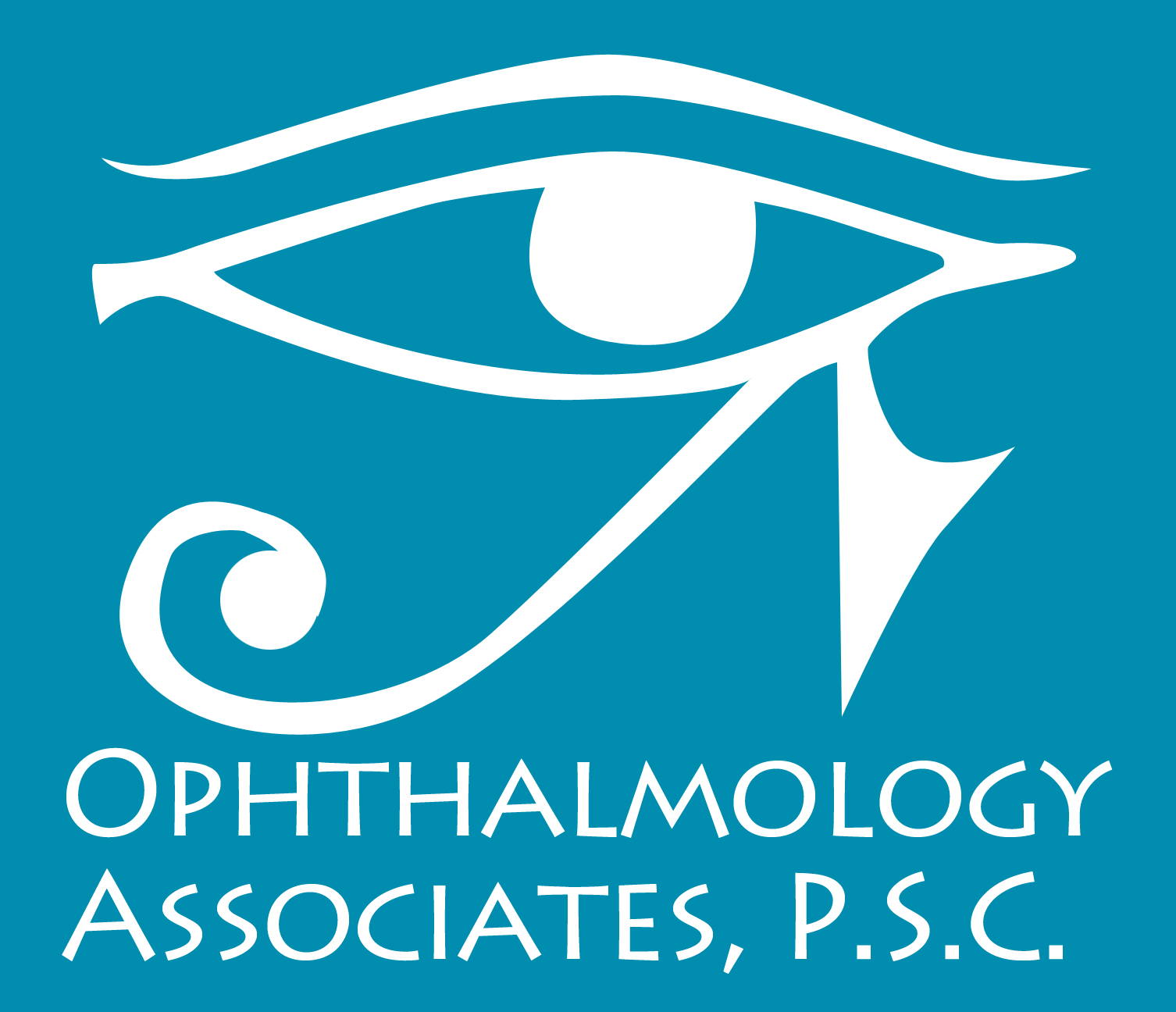Macular Degeneration

Macular degeneration is a deterioration of the macula. The macula is a small area in the retina that allows you to see fine details clearly and perform activities such as reading and driving. Your central vision can be affected with symptoms of blurriness, dark areas or distortion when the macula does not function correctly. Macular degeneration reduces central vision; however it usually does not affect the eye’s peripheral vision. For example, you could see the outline of a clock but not be able to tell what time it is. In many cases, macular degeneration’s impact on your vision can be minimal.
What causes macular degeneration? Older people may develop macular degeneration as part of the body’s natural aging process. This is known as age-related macular degeneration (AMD). The two most common types of AMD are “dry” (atrophic) and “wet” (exudative).
“Dry macular Degeneration (Atrophic)
“Dry” macular degeneration is caused by aging and thinning of the tissues of the macula. Vision loss is usually gradual.
“Wet macular Degeneration (Exudative)
“Wet” macular degeneration accounts for about 10% of all AMD cases, but a high percentage of those cases develop significant vision loss. Wet AMD results when abnormal blood vessels form underneath the retina. The new blood vessels leak fluid or blood and blur the central vision. In this type, vision loss may be rapid and severe.
Drusen, a common feature of macular degeneration, are deposits that form under the retina. Drusen alone does not usually cause vision loss. However, when they increase in size or number, this generally indicates an increased risk of developing advanced “wet” AMD.
What are the symptoms of macular degeneration?
The following are some common ways vision loss is detected:
• Words on a page look blurred.
• A dark or empty area appears in the center of vision.
• Straight lines look distorted, as in the diagram found at the bottom of the page.
How is macular degeneration diagnosed?
Your retina specialist can detect early stages of AMD during a medical eye examination that includes the following:
• A simple vision test in which you look at a chart that resembles graph paper (Amsler grid);
• Viewing the macula with a special lens;
• Taking special photographs of the eye called fluorescein angiography and optical coherence tomography (OCT) to find abnormal blood vessels, fluid, or blood under the retina; Ophthalmology Associates has the means of administering these tests in the office.
How is macular degeneration treated?
Antioxidant vitamins and zinc may reduce the impact of AMD in some people. However, it is important to remember that vitamin supplements are not a cure for AMD, nor will they restore the vision that you may have already lost from the disease. However, specific amounts of these supplements do play a key role in helping some people at high risk for advanced AMD to maintain their vision. Speak with your retina specialist to determine if you are at high risk for advanced AMD, and inquire if these supplements would be recommended for you.
Laser Surgery, PDT and Anti-VEGF Treatments
Certain types of “wet” macular degeneration can be treated with laser surgery. A treatment called photodynamic therapy (PDT) uses a combination of a special drug and laser treatment to slow or stop leaking blood vessels.
Another form of treatment available targets a specific chemical in your body that is critical in causing abnormal blood vessels to grow under the retina. The chemical is called vascular endothelial growth factor (VEGF). Anti-VEGF drugs block the trouble-causing VEGF, reducing the growth of abnormal blood vessels and slowing their leakage. These drugs are administered by means of an injection into the eye. These injections are performed in the office.
These procedures may preserve more sight overall, but they are not cures that restore vision to normal. Despite advanced medical treatment, many people with macular degeneration still experience some vision loss.
Testing your vision with the Amsler grid
You can check your vision daily by using an Amsler grid.
1. Wear your reading glasses and hold the grid 12 – 15 inches away.
2. Cover one eye.
3. Look directly at the center dot with the uncovered eye.
4. While looking directly at the center dot, note whether all lines of the grid are straight or if any areas are distorted, blurred or dark.
5. Repeat this procedure with the other eye.
6. If any area of the grid looks wavy, blurred or dark, contact your retina specialist immediately.

